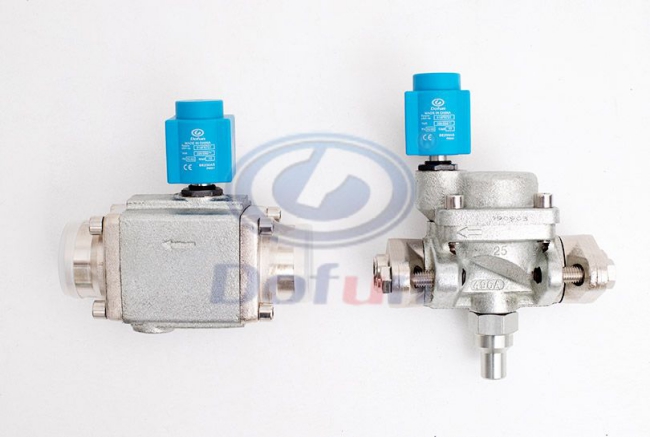Failure phenomenon 5, the solenoid valve slider is deformed
If the slider is deformed, even if the solenoid valve coil is energized, the spool of the pilot valve will not move, which will cause the slider to fail to reverse, causing gas to flow inside the valve body, and the high-pressure gas in the compressor will form a short cycle, causing high temperature and high pressure, until frequent thermal protection, eventually burn out the compressor insulation layer. For the entire system, the high-pressure pressure of the shut-off valve leaks to the low-pressure end, reducing the high/low-pressure difference. It often manifests as no cooling, no heating, or poor effect.

Causes and troubleshooting methods:
When the solenoid directional valve coil is open, short-circuited, or burned out, the valve core cannot be closed, causing the slider to not move. Should be replaced. The solenoid valve armature is stuck, the valve core cannot move, causing the slider to not move. The valve body can be opened for cleaning and adjustment.
When the power supply voltage is lower than the rated value of the solenoid valve, the pressure difference between the inlet and outlet of the solenoid valve exceeds the valve opening capacity. At this time, the valve often emits a "click" noise, causing the valve core to fail to close. The power supply should be improved.
The flow direction of the solenoid valve is reversed, causing the valve core to not move. The flow direction should be adjusted. The system's high temperature, high pressure, and impurities in the machine cause the slider to be deformed and stuck. It should be replaced.
The remanent magnetism attracts the valve core or the valve core is stuck, and the solenoid valve cannot be closed after power failure. Clean and adjust, replace if no effect. The solenoid valve gasket is damaged or the fastening screw is loose, causing refrigerant leakage. Replace the gasket and tighten the screws.
The capillary tube on the valve is blocked or broken, or the system leaks seriously and the slider does not move. Clean the capillary or sleeve welding with a copper tube slightly thicker than the broken capillary. Dirt in the valve, damage to the valve seat or valve needle, and too small spring force cause the solenoid valve to close tightly. Clean and adjust or replace the spring.
In addition, if the internal leakage of the reversing valve causes high-pressure refrigerant gas to leak to the low-pressure side, and normal pressure cannot be established at both ends of the reversing valve piston, the reversing valve should be replaced.
If the pressure difference of the refrigeration system is too large to change the direction of the reversing valve, check the pressure of the refrigeration system or find the leakage point, and fill the refrigerant. If the slide of the four-way valve does not move or does not move properly, you can use a screwdriver to tap one end of the wooden handle when checking and judging, tap the valve body lightly, turn on or off the AC 220V power supply from time to time, repeat it several times, and hear the armature suction. When the sound is combined with the reversing sound of the gas in the valve body, it can be determined that the reversing valve basically returns to normal operation.
The above information is provided by the regulation valve factory.